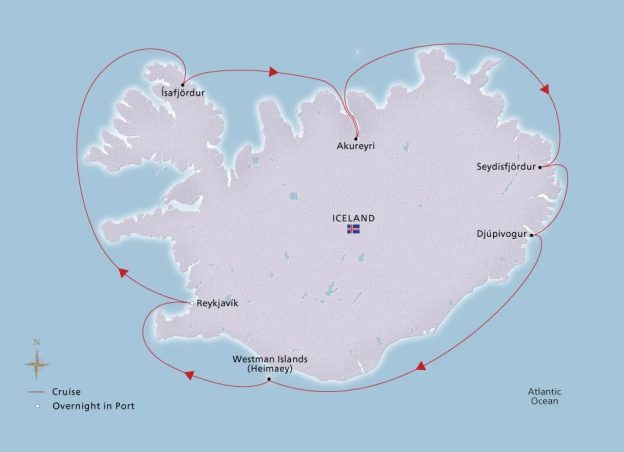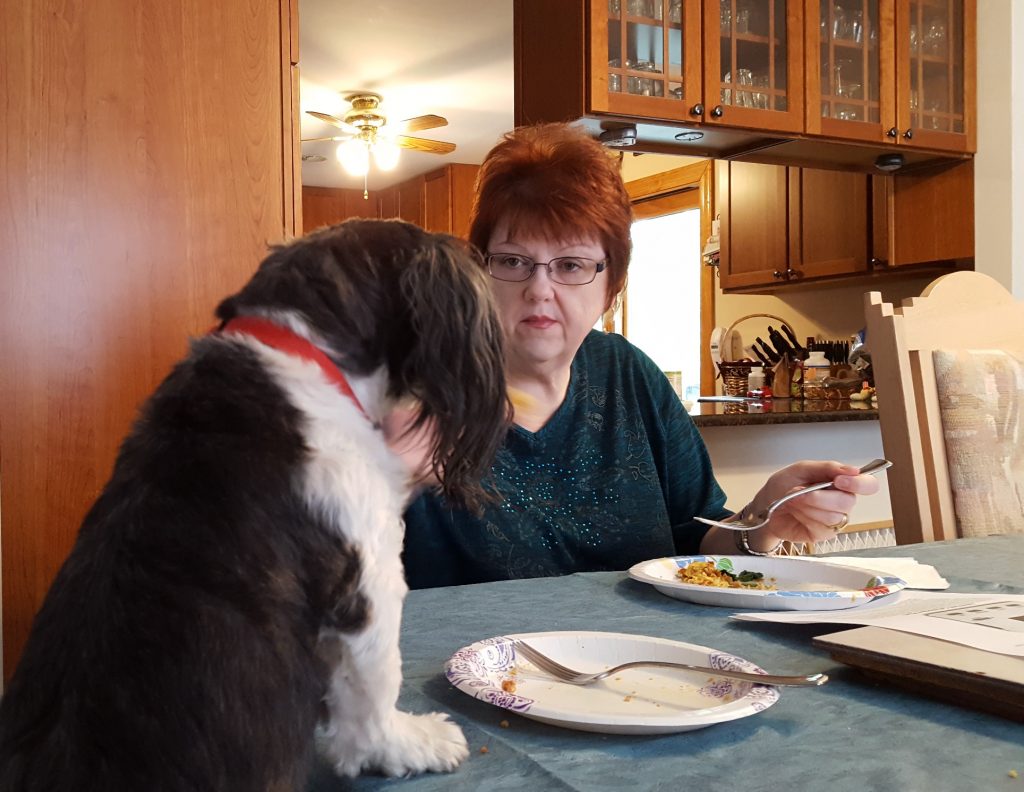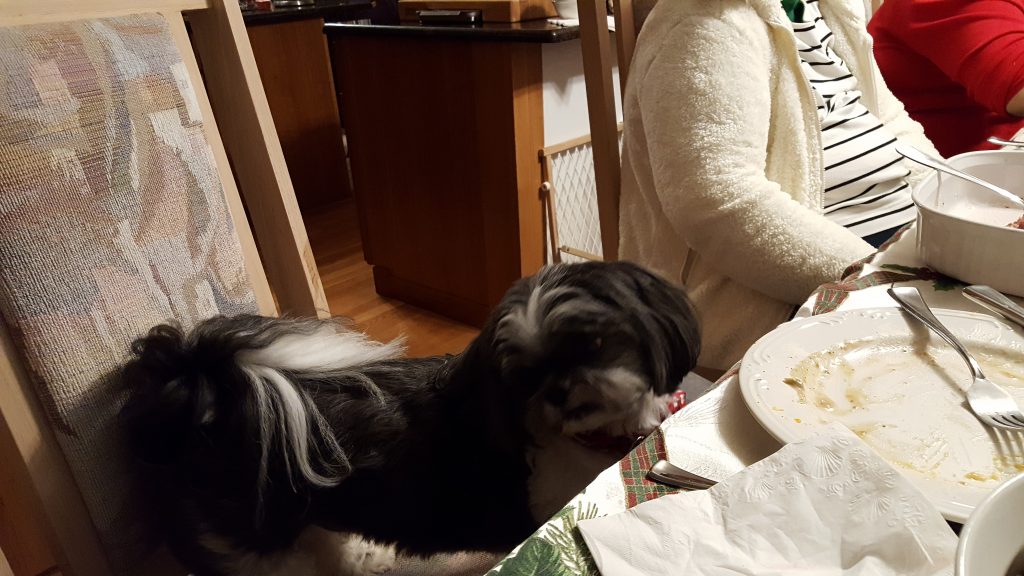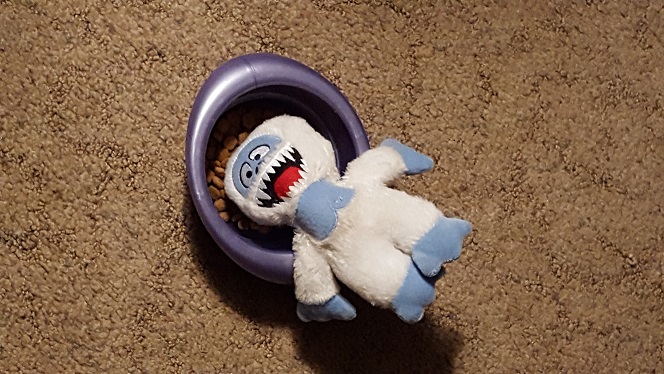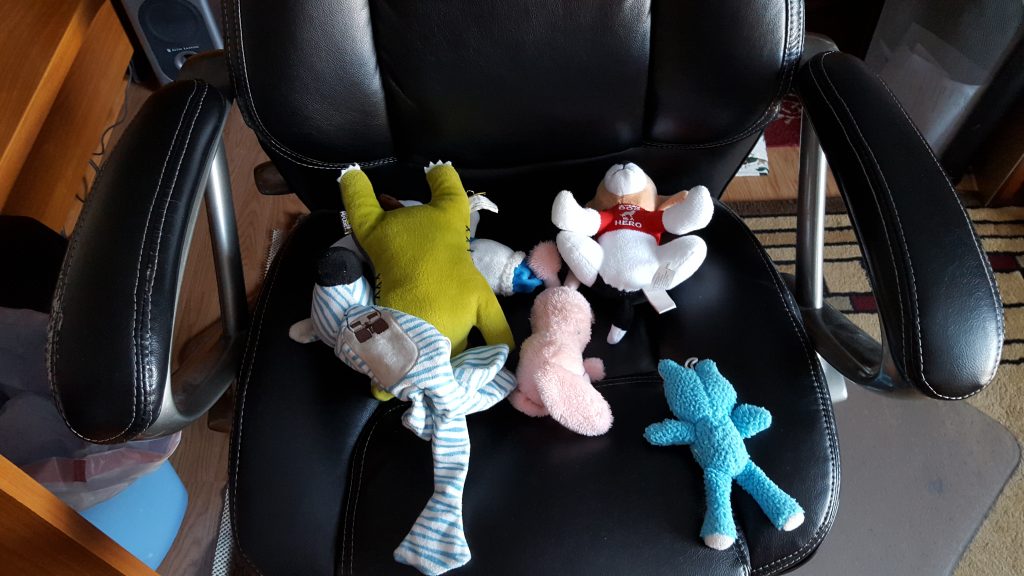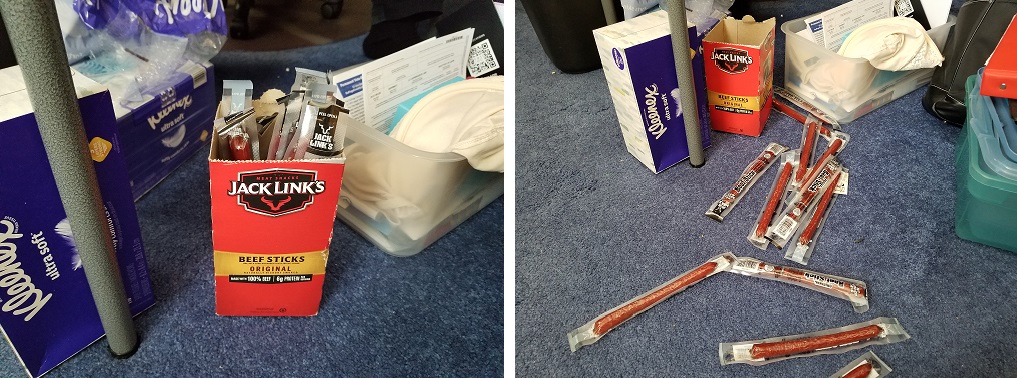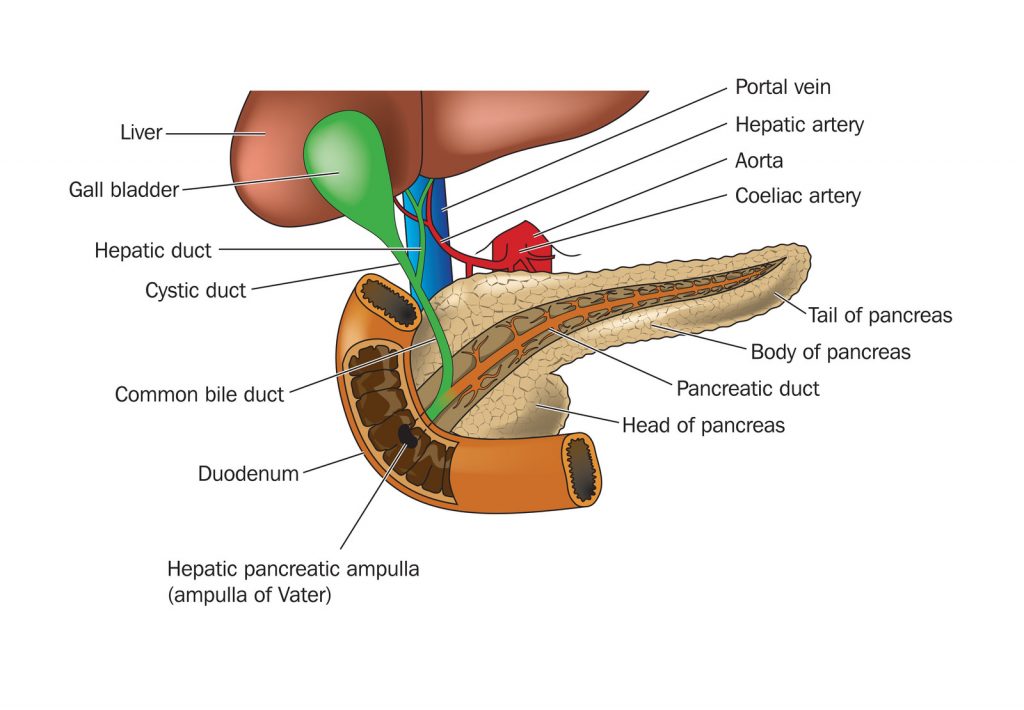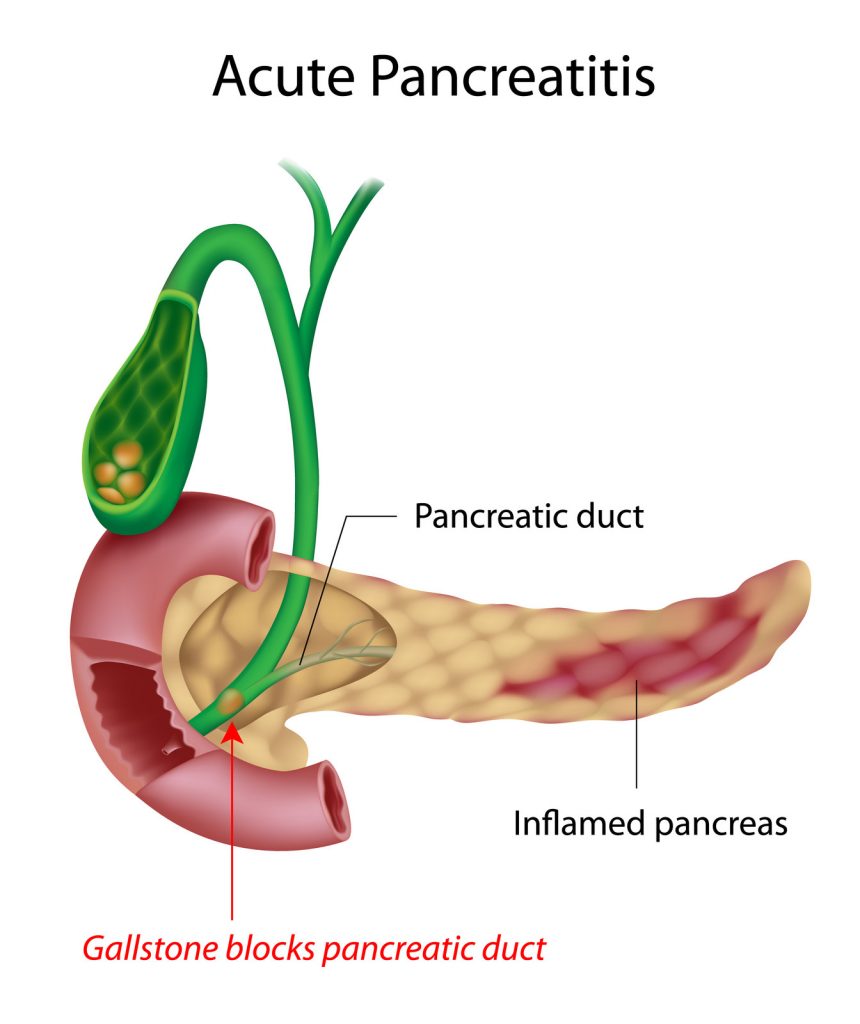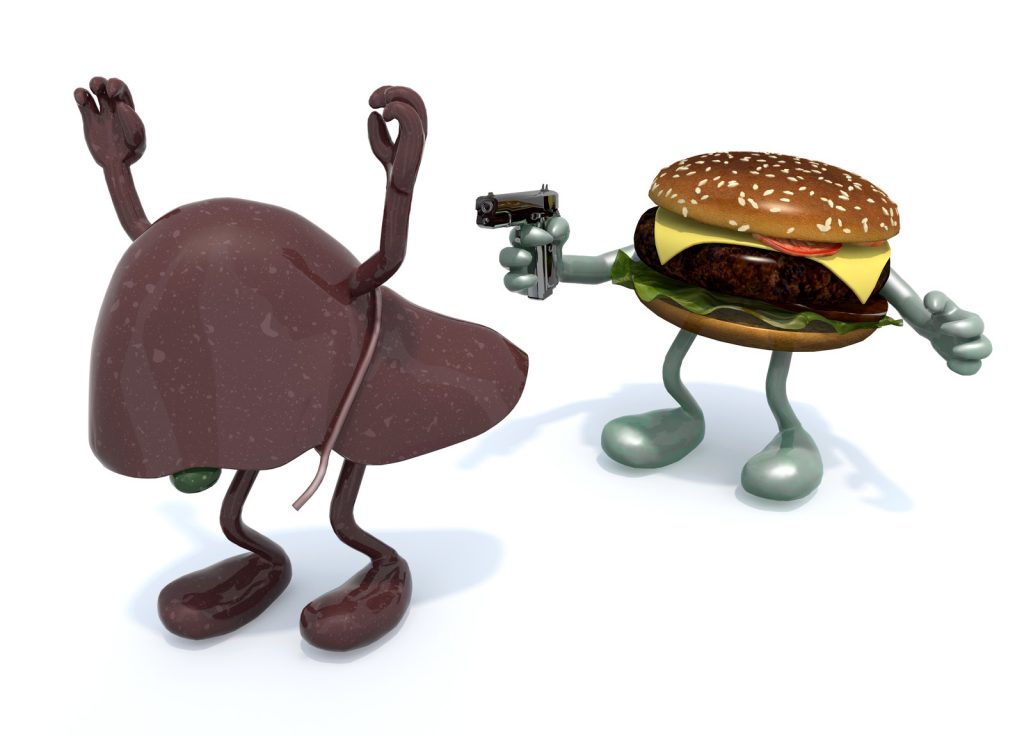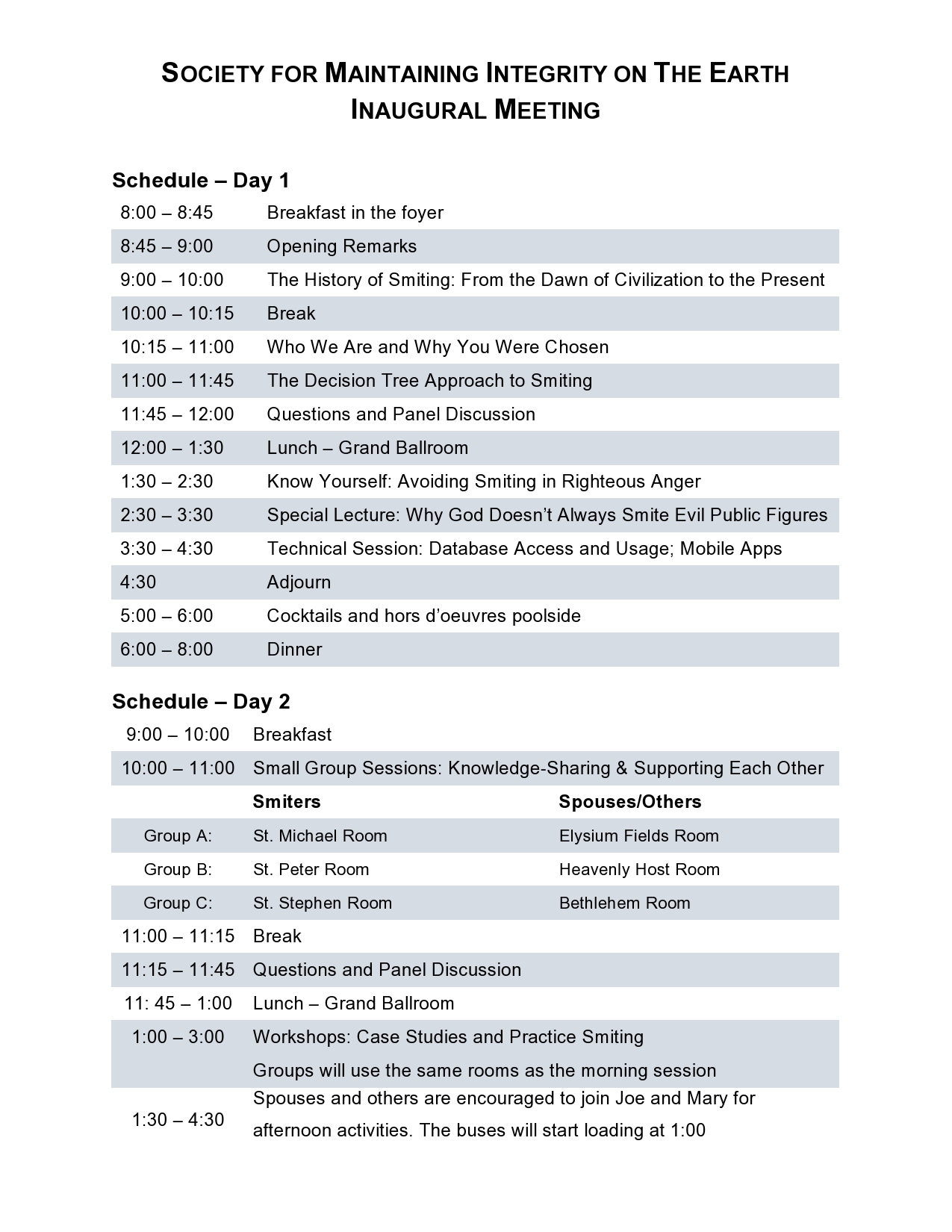When you have the time, you won’t have the money.
When you have the money, you won’t have the time.
When you have the time and the money, you won’t have the energy.
I’ve been wanting to go to Iceland since my 50th and 60th birthdays. We decided to combine my 70th with our 25th wedding anniversary and take a cruise around the island. Better late than never
We left from O’Hare’s international terminal, whose recent $1.3 billion expansion just made for a longer walk. We got a quick bite at Rick Bayless’ (famous Chicago chef) Tortas Frontera before heading for a two-hour wait at the gate.
Our flight left Chicago at 10:15pm on Icelandair, albeit on a dreaded Boeing 737 Max. (We survived!) If you’re old and going to do a long flight, I highly recommend shucking out the extra money for business class; it is a very long, six-hour flight. The seats are comfortable and accommodated my fat ass nicely. Each seat had a pillow, a comfy blanket and a cute little welcome bag made of reinforced biodegradable paper with socks, a sleep mask, toothbrush, hand cream and other stuff.
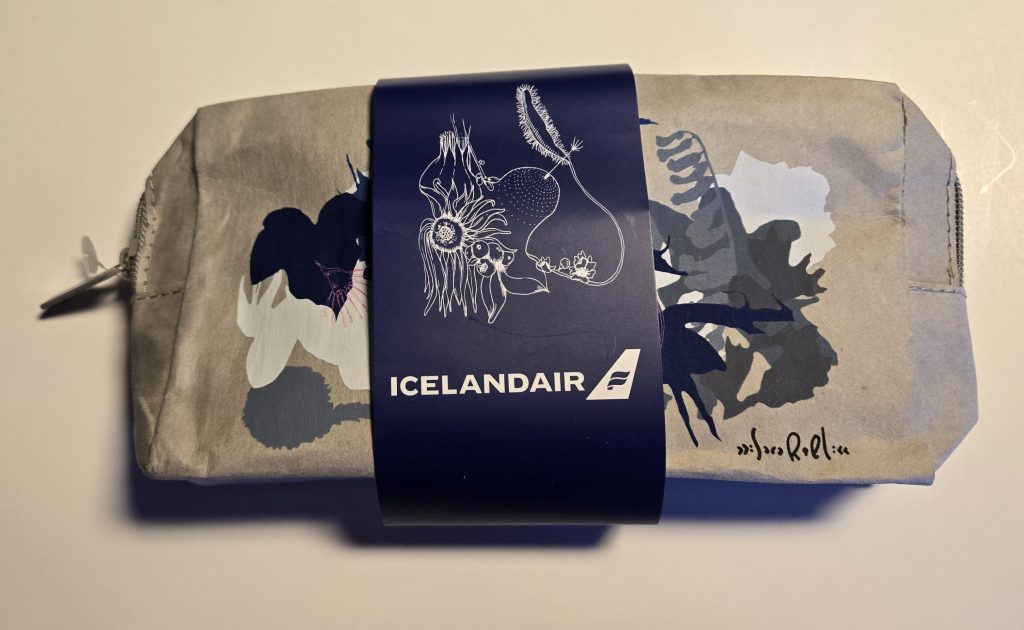
The flight attendants were a hoot; a skinny Indonesian looking guy, wearing an ascot and apparently enamored with his style, and an equally skinny young Nordic man. They treat passengers like royalty. They offered us bottled water, caramel corn, and free headphones (main cabin passengers had to rent them) and menus.
The food was great; delicate portions served on real china plates with real silverware. I tried 64° Reykjavik Distillery’s Angelica Gin, which tasted more like paint thinner and less like the typical juniper-based gin. However, on the way back I discovered their Rhubarb Gin. Very tasty!
The LED screens in the seatbacks provided a map of the jet’s progress along with information on altitude (36,000ft.), cruising speed (600 mph), outside temperature (around -56°F) and departure/destination times. Entertainment options included movies, TV, and Icelandic classical music selections. Peg watched the Barbie movie. I tried sampling the Icelandic music in between glancing at her screen and the one the next row up who was watching The Hitman’s Bodyguard.
About two hours after takeoff, the horizon started to lighten somewhere over Eastern Quebec. The sun was up by the time we reached the middle of the Labrador Sea. We passed over Greenland, but the clouds made it impossible to see the terrain. Finally, we landed in Keflavik at 9:30am local time, a beautiful sunny day. That was the last time we’d see the sun for the rest of the trip.
Getting off the plane provided our first shock. Tourist traffic has completely overwhelmed Keflavik International Airport and the crowds are worse than O’Hare. We had to walk down aluminum stairs rolled up to the aircraft; only departing flights get a jet bridge. The Rollator we gate-checked at O’Hare and assumed would be at the plane was nowhere to be found; we figured it went to baggage claim. We hobbled over to the buses that took us to the South Terminal, where we funneled in through a single set of doors like cattle being led to the slaughter.
Once inside, we took escalators to the second floor and made the long walk to Customs, entering the maze until the crowd stopped. We saw several Automated Passport Control kiosks wrapped in plastic that might have made the process faster but they hadn’t been installed .We stood in line for about 20 minutes. We finally made it through and took a short break; Peg’s foot was killing her by this time.
There are no people movers in the very long corridor connecting the South Terminal to the Main Terminal. I ran ahead of Peg to find the Rollator, but there was no way to retrieve it and then re-enter the secure area, so I came back, and we just kept walking.

Baggage claim is one floor down; Peg and I took the elevator. The first thing we saw before we got there were the requisite shops, including two familiar American shops:

I picked up our suitcases, but I couldn’t find the oversized luggage carousel, so I asked the young woman at customer service. I followed her (it was in plain sight) and apologized for being so clueless. She said, “That’s all right. You just wanted to meet me.” In the meantime, Peg got cash from a nearby ATM; banknotes come in 500, 1000, 2000, 5000, and 10000 krónur and like most foreign currency, they are very colorful. If that seems like a lot of money, keep in mind 1000 ISK is around $7.25, more or less.
Customs authorities must be very trusting because there were no officials at the “nothing to declare” aisle, so we walked through and found ourselves in the main terminal near the exits, across from the currency exchange Peg had expected near baggage claim. I looked for a bathroom but the nearest facilities were down one floor in a rather secluded area.
We stepped outside to the taxi stands. We could get to downtown Reykjavik for about $68 each via Flybus Airport Transfer, but a friend of Peg’s who has been to Iceland told her it would let us off at a designated bus stop a few blocks from the hotel. We weren’t going to schlep two suitcases, a Rollator, and a carry-on bag so we opted for a cab.
The nice young man staffing the taxi stand told us there were fewer cabs than usual, which at that time meant none, except for an empty van with no visible driver. They arrived one at a time, several minutes apart. We stood in line with a few other passengers and enjoyed our first view of Iceland on the ground.
Predictably, there was one American asshole who pushed to the head of the line, thinking he should take priority. He wanted to go to the Parliament Hotel in Reykjavik and tried to bum a ride with a couple that was going into Keflavik. The next available cab was a full-sized SUV. Peg asked the driver, “Is the Hotel Konsulat near the Parliament?” The asshole quickly interjected, “No!” Seriously? Later Google maps indicated the two hotels are about 4 blocks apart. It’s probably better that we didn’t ride with him.
Downtown Reykjavik is about 31 miles from the airport. The landscape between Keflavik and Reykjavik looks like Eastern Montana; very rough terrain covered with moss, the first thing to grow on volcanic rock. The highways are two-lane and not as wide as our Interstate or major US highways. They were well maintained, without the abundant and often perpetual potholes in the Midwest.
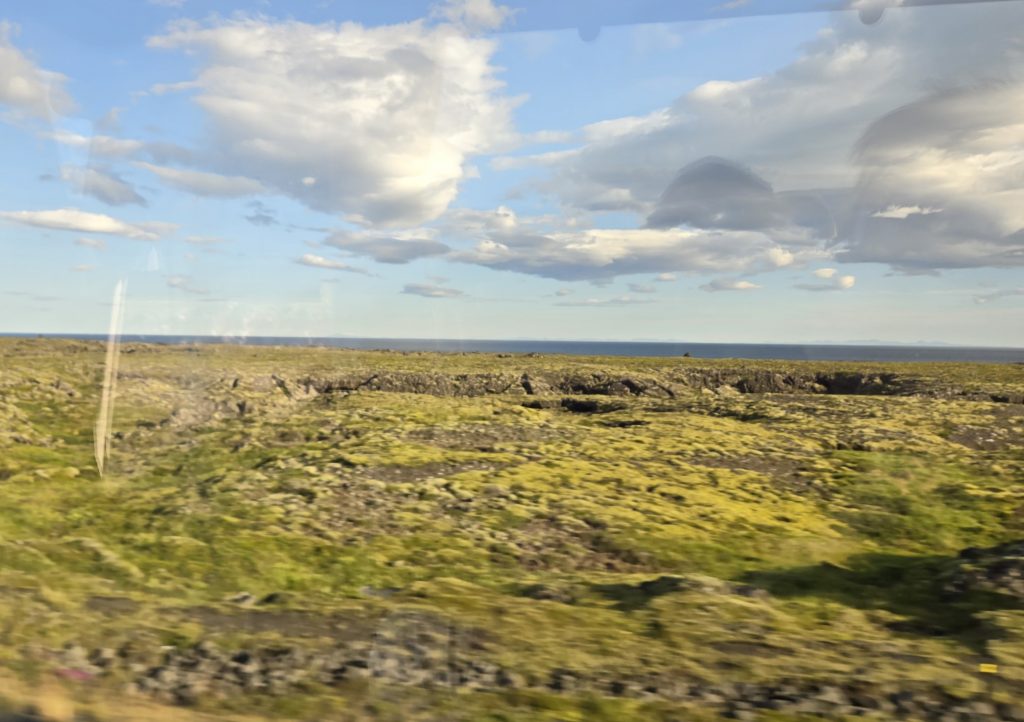
We approached the outskirts of Reykjavik and, while most of the businesses have Icelandic names, signs on the buildings have a mixture of English and Icelandic. And Iceland isn’t immune from American influences; we saw Subway, Domino’s Pizza and KFC. There are no Starbucks in Iceland because, as this What’s On article notes:
“The absence of Starbucks in Iceland is not a sign of a lack of coffee culture; rather, it represents a conscious choice to prioritize local businesses and foster a thriving scene for specialty coffee. Icelanders value the craftsmanship and dedication of their local roasters and baristas, who treat coffee with the same reverence that they extend to their beloved natural landscapes.”
Gasoline in Iceland is expensive, about $9.60 a gallon when we were there. Most of the cars we saw were small, including an electric Nissan Leaf, but there were a few Beemers and Mercedes. The Orkan petrol chain, with its bright pink color scheme, advertises “Cheap Gas.” N1 and Olís stations tend to be more expensive
Our driver took us through narrow streets in the downtown area before stopping in front of the Reykjavik Konsulat Hotel, which one would miss it if walking by casually. There is no big lighted sign and no parking lot, and the door isn’t automatic. That is because it was formerly a department store in the early 1900s, owned by Konsul Ditlev Thomson.
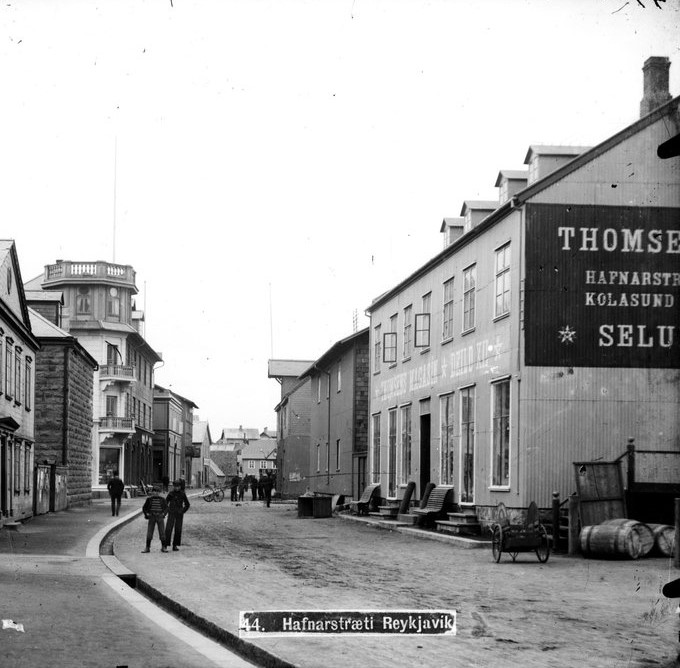
The hotel is very charming. The reception area and the wine room off to the left are done in dark wood. The elevators are very narrow; one of them could only hold two people. The top part of the car is papered with old photos of a store or apothecary shop; the bottom was wood, looking like rows of small drawer fronts. You can see more photos of the hotel at their Facebook page.
Our room was on the 4th floor, small by American standards, but typical of European hotel rooms and quite cozy. The first thing we noticed was the king-sized bed had two individual comforters and no top sheet! The bathroom walls had large tiles from floor to ceiling; the wall behind the sink was done in mosaic tile. The shower had two heads, and the body wash, shampoo and conditioner were in refillable bottles.
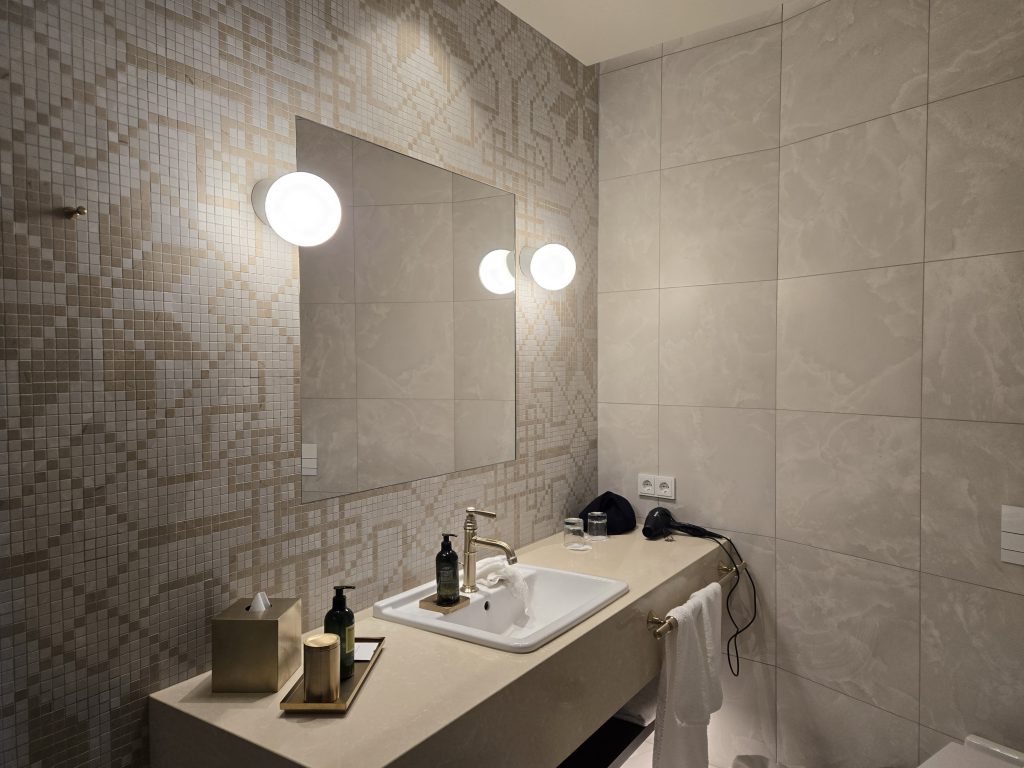
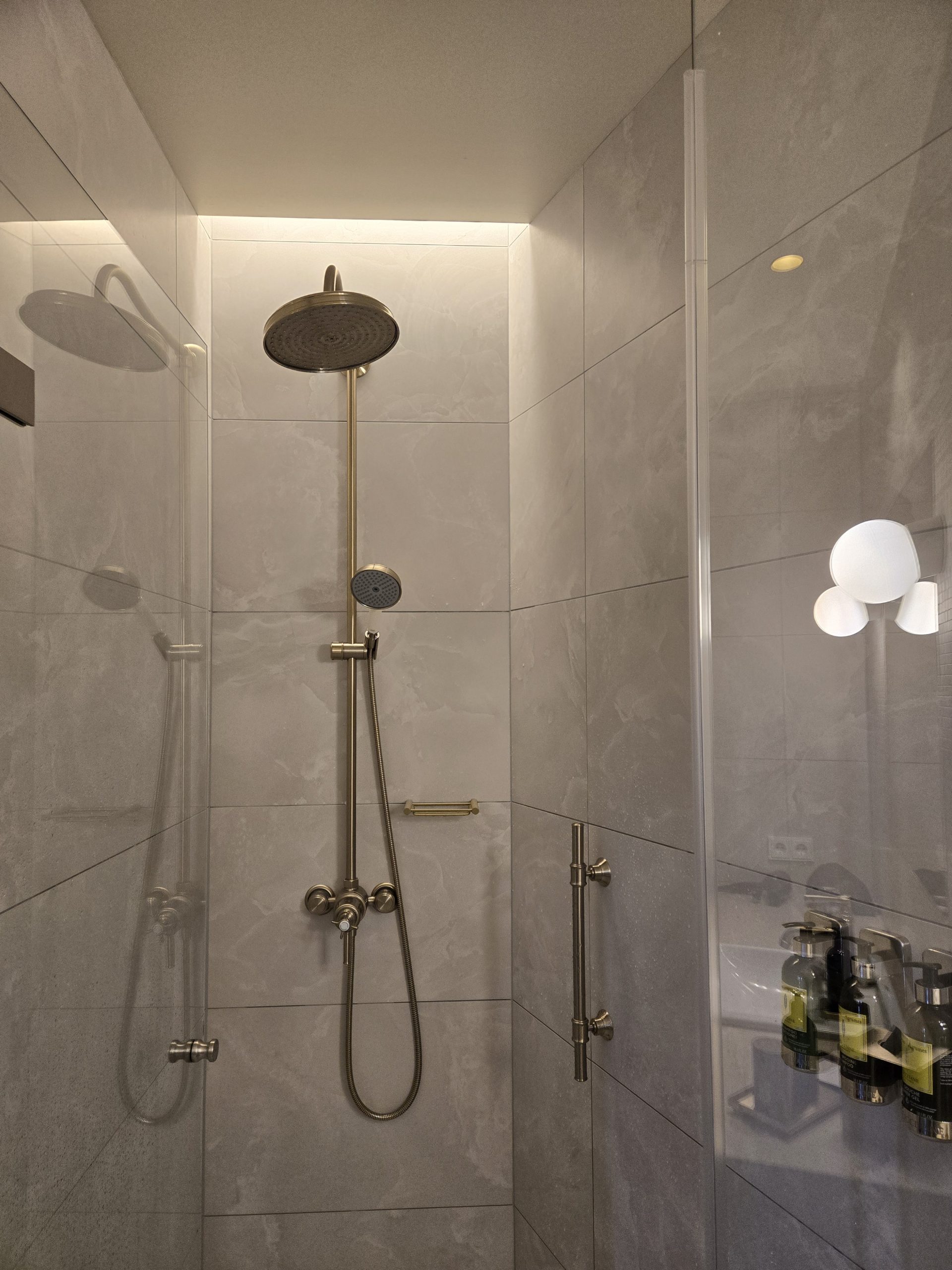
There was a very small balcony through a narrow door just to the right of our bed. I took these pictures of the Radisson Blu 1919.


(According to Google Translate eimskip is “steamship”, and eimski is “stupid.” What a difference a letter makes.)
We were exhausted. Bu this time it was noon local time and we’d been up for 24 hours, so we got comfortable and jumped into bed for what turned into a five-hour nap. Neither one of us had the energy to find a restaurant after we got up, so we went downstairs to the bar to the right of the reception desk. It was quiet and cozy, with floor to ceiling windows, comfortable chairs and an attentive bartender. Peg ordered Iceland’s domestic beer, Gull, and I had a glass of white wine. Prohibition in Iceland began in 1915 and, while wine and spirits were legalized in 1922 and 1935, respectively, beer only became legal in 1989.




Bæjarins Beztu Pylsur (The Town’s Best Sausages), sitting just outside the bar, is the iconic hot dog stand that’s been in downtown Reykjavik since 1937. Icelandic hotdogs, made with lamb, are longer than our domestic dogs, and can be customized with Remolaði sauce, Icelandic mustard, fried or raw onions, and a ketchup sweetened with apples instead of sugar. They are also relatively cheap, about ISK790, or a little less than six bucks. There are people lined up in all seasons, but they are served quickly. We noticed two things: everyone paid with a credit card and the soft drinks are small; no extra-large or Big Gulps. The straws are recyclable; Iceland banned single-use plastic in 2021. You can see the crowd over Peg’s shoulder.

There is no real night in Iceland during the weeks either side of the summer solstice, only a four-hour period of dusk. The downside is there’s only a four-hour period of daylight during the weeks around the winter solstice.


I opened the balcony door in the middle of the night; there isn’t any air conditioning, and the room was becoming stuffy. There’s a bar, Hornið (trans: the corner), on the street and the rowdies sitting outside were at it until at least 3am. Someone was singing, “I don’t wanna wait,” but my sleep-deprived brain kept hearing “Power 108” as in “KPWR 108.3 FM.” (Actually, KPWR is a real radio station in Los Angeles, “Power 106” – 105.9FM)
We slept in and missed the hotel’s breakfast buffet, so Peg had hot tea while we waited for the 11 am cab we had arranged. I considered going across the street to Joe & The Juice for a cappuccino, but I didn’t want to miss our ride. (I discovered Joe & The Juice isn’t exclusive to Iceland; there are stores across Europe and seven in Chicago!)
I regret we were about to leave Reykjavik without having visited Hið Íslenzka Reðasafn, The Icelandic Phallological Museum. Maybe next time.
Next: Embarkation (fancy talk for boarding the ship)
Aerial view of Keflavik Airport. (C) 2017 by Eric Salard. Licensed under Creative Commons CC BY-SA 4.0
